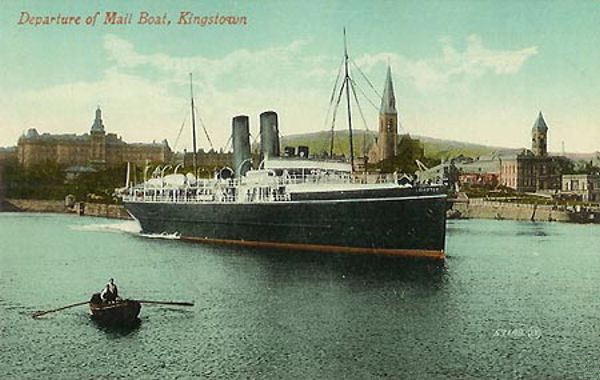What of the Women Who Kept the Home Fires Burning?

It’s easy to think of war as a ‘man’s game,’ but what of the women who kept the home fires burning?
In late October 1918 word was received that Nursing Sister Henriette Millet, formerly head nurse of the Nanaimo hospital, was among those lost when the passenger liner Leinster was torpedoed and sunk by a German U-boat in the Irish Sea.
Within weeks of Armistice, this latest tragedy claimed 564 passengers, British and American, 130 of them women and children.
For four years of war nurse Millet had served King and Country in Mesopotamia, at the Dardanelles and in France, only to be killed in friendly seas when sailing for home.
And the women who kept the home fires burning?
It also became public knowledge that some women were suffering closer to home, too, it being reported that an unnamed veteran’s widow had been cited in police court for not having her children attend school regularly. It turned out that her husband, who’d been released from military service for reasons unspecified, had returned to work in the coal mines only to be killed after 15 days on the job.
(The single local mining tragedy of that year claimed the lives of 16 miners when the hoisting cables in the Protection Island mine shaft failed on Sept. 10, 1918. None of the victims, whose names, ages and family status were given in the news reports, match this case, however, suggesting that her husband had died in a previous mishap.)
That left his widow to raise eight children on $40 per month, of which she paid $10 monthly rent, leaving her $30 for all other expenses. Although it was winter her children were said to be scantily clothed as it was all the poor woman could do to provide for them.
Having made himself “fully acquainted with the circumstances” of her case, police magistrate C.H. Beevor-Potts had learned that, even worse than it appeared, it was a case of insult being added to injury. Her child was out of school because of illness; he declared that, under the circumstances, it was no great surprise that the child should be ill.
He then expressed his indignation at the “scandalous” treatment she’d received at the hands of the Compensation Board.
He said that, when he approached the board to discuss her case, he–a magistrate of the court–had received an “insulting reply to the effect that it was hoped he was not expecting any pay for his services”!
He said he’d taken it up with “some responsible people around town” and notified the Great War Veterans Association of the woman’s plight as she’d not received any of the entitlements due her as the widow of a serviceman.
We have to hope that Beevor-Potts succeeded in bringing relief to this unfortunate woman and her family. Nothing more was stated in the Nanaimo Free Press and, without names, there’s nothing more to be learned of this case.
But don’t think for a moment that there weren’t other cases like hers. It’s a matter of record that pensions and, later, “relief” didn’t come just for the asking. Applicants had to literally bare their souls–and be absolutely, totally destitute–before the ‘State’ came through with any kind of assistance, and that, too often, a pittance.
But that’s a subject for another day.
I’ll conclude with a reminder that the world wars weren’t the only wars in our history. Looking back to February 1902, we learn that another Nanaimo man died in the service of his country. For Lieut. J. Stanley Hudson, this was at Tweefontein, South Africa, during the Boer War.
Born in Japan and educated at Eastbourne College, he was 27 years old. Before enlisting he’d had numerous odd jobs until he found employment in Charles Dempster’s auction and furniture rooms, and he’d been an ardent supporter of the YMCA. But, after only a few months, he was offered a position in a bank in the Yukon and off the “light-haired, jolly young fellow” went.
It was probably that same sense of adventure, with patriotism thrown in, that called him to enlist at Maidstone, England, in January 1901. As a trooper in the 36th Squadron, West Kent Imperial Yeomanry, he’d been sent to South Africa a month later, where he distinguished himself in “several important engagements” and was promoted to lieutenant.
A year later he was killed in action.
The Boer War, the First World War, the Second World War, the Korean War and peacekeeping missions… Lest we forget.

An Irish ship, the RMS Leinster served as the Kingstown–Holyhead mail boat until she was torpedoed and sunk by the German submarine UB-123, on October 10, 1918, while bound for Holyhead. She sank just outside Dublin Bay at a point four nautical miles (7.4 km) east of the Kish light.
The exact number of dead is unknown but researchers from the National Maritime Museum believe it was at least 564; this would make it the largest single loss of life in the Irish Seas.
Three weeks before Armistice Day, the UB-123 was lost with all hands. —Postcard, public domain

So many sad stories. Thank you for sharing.